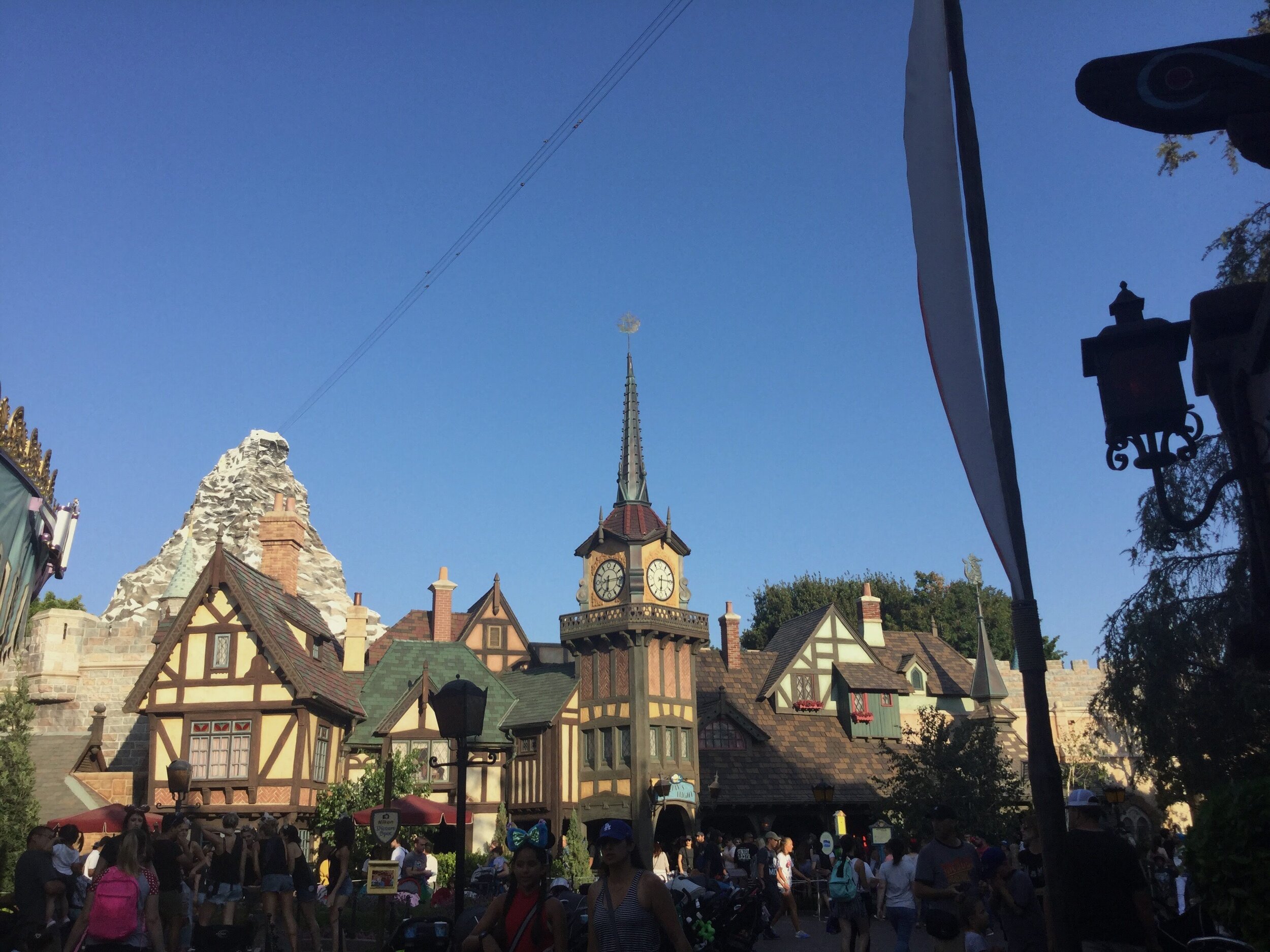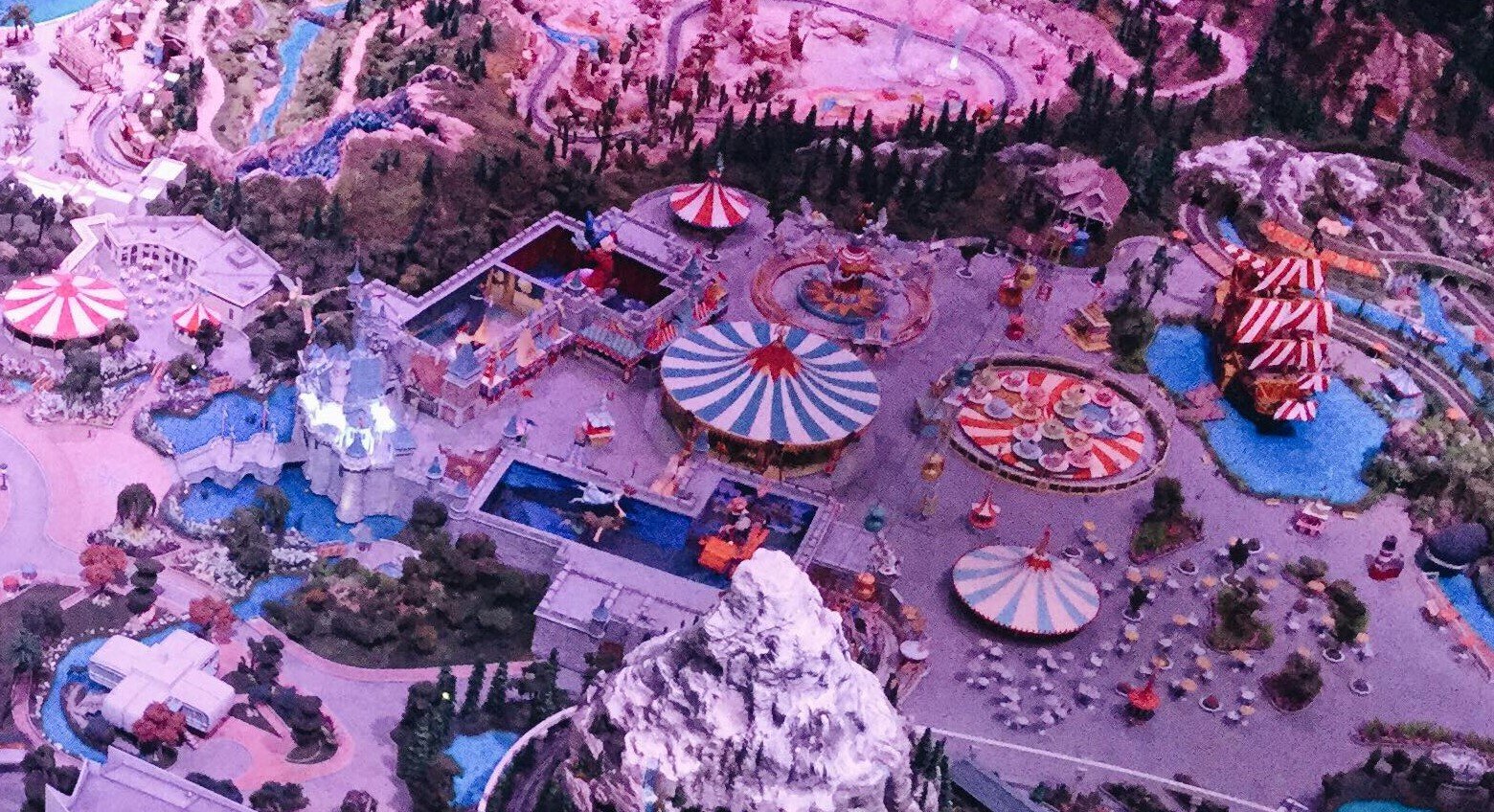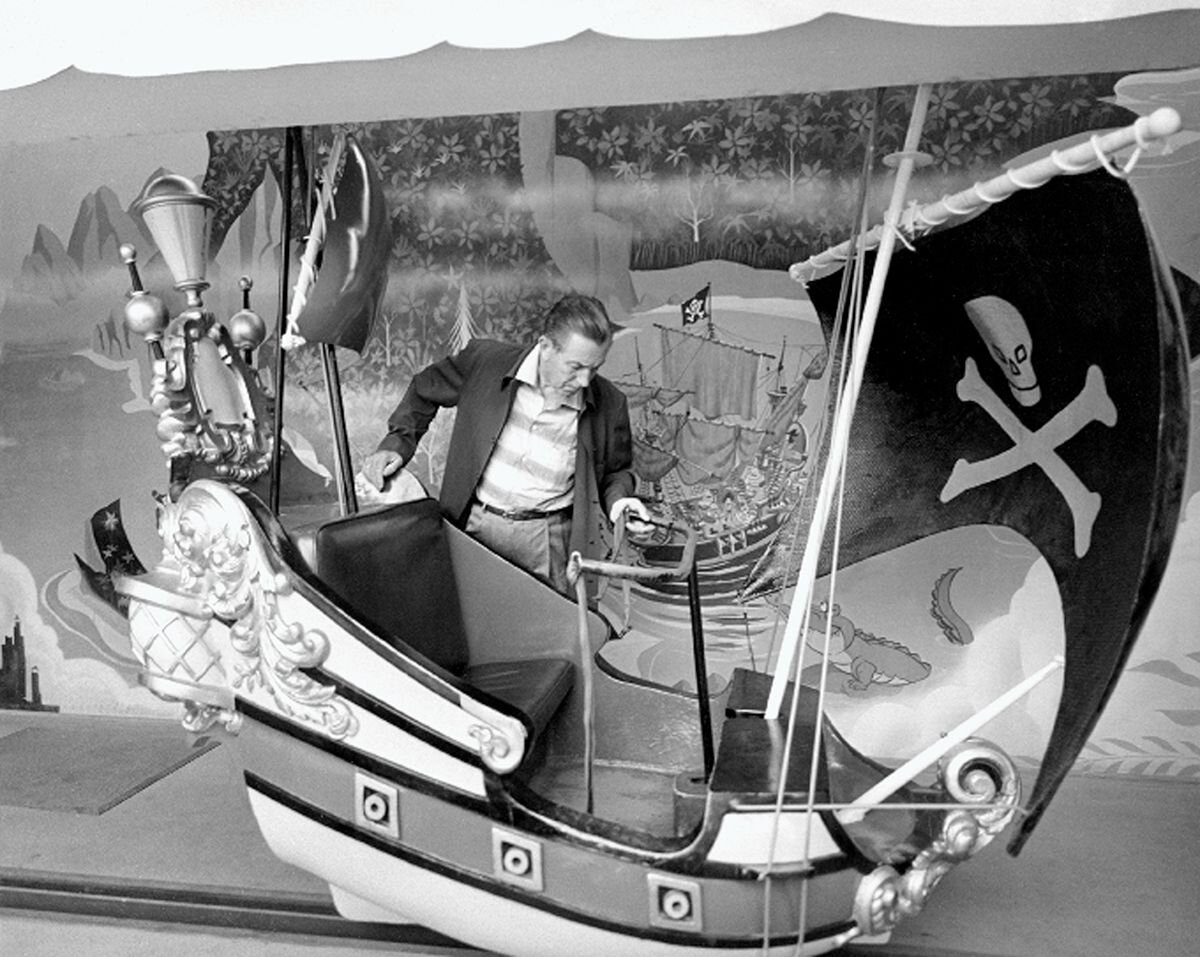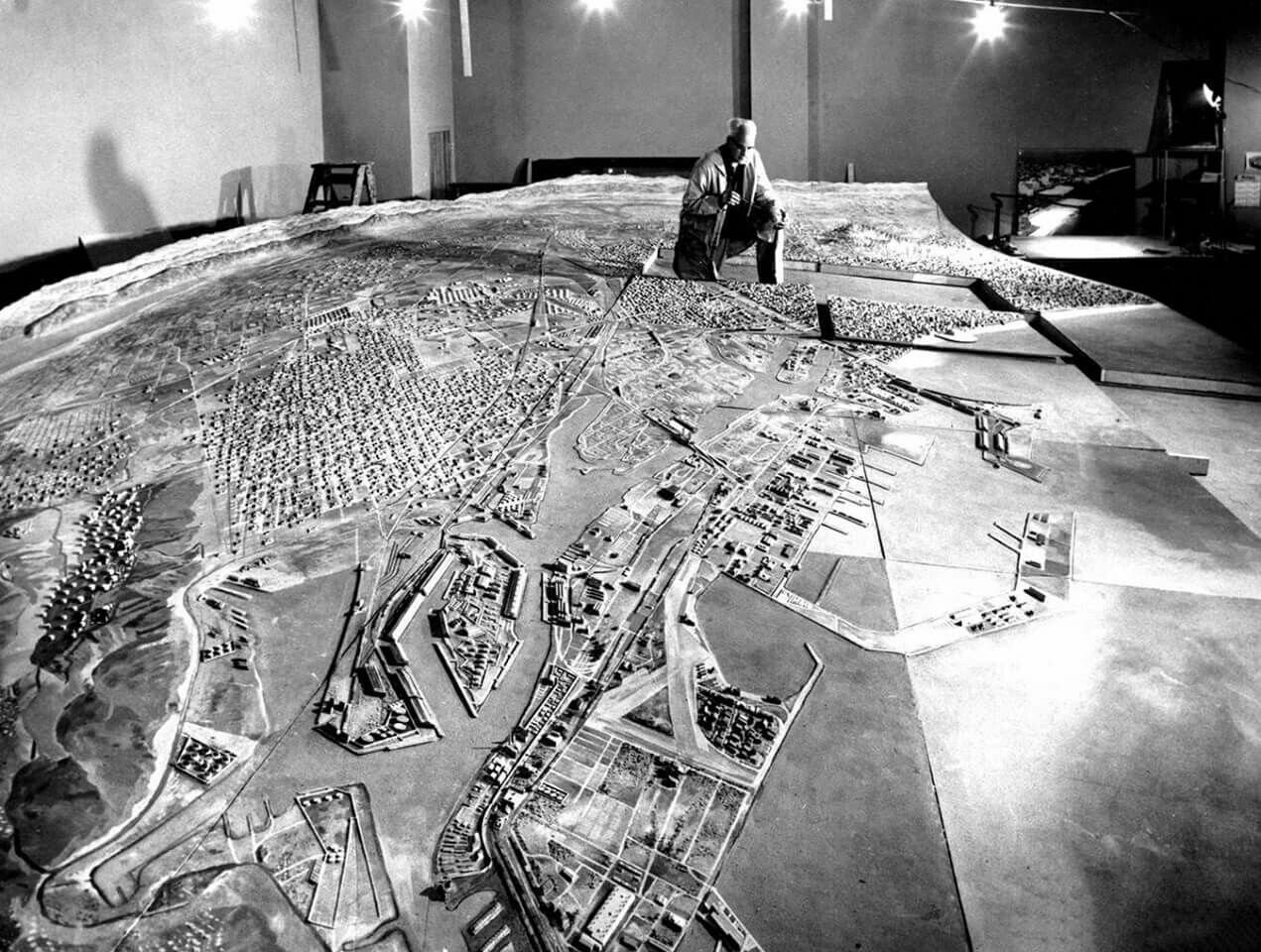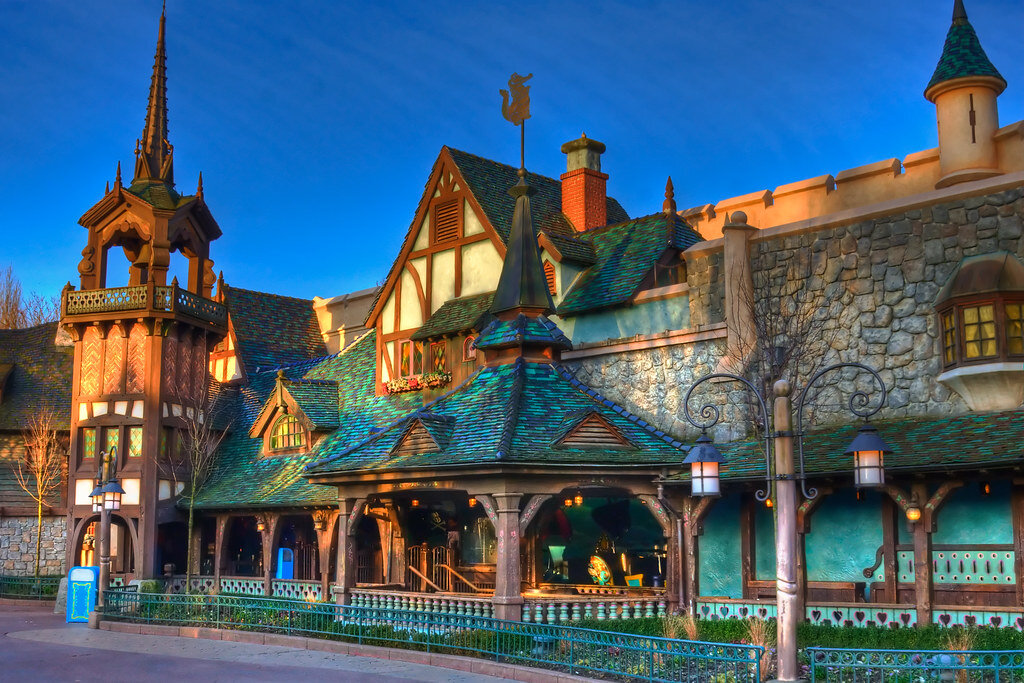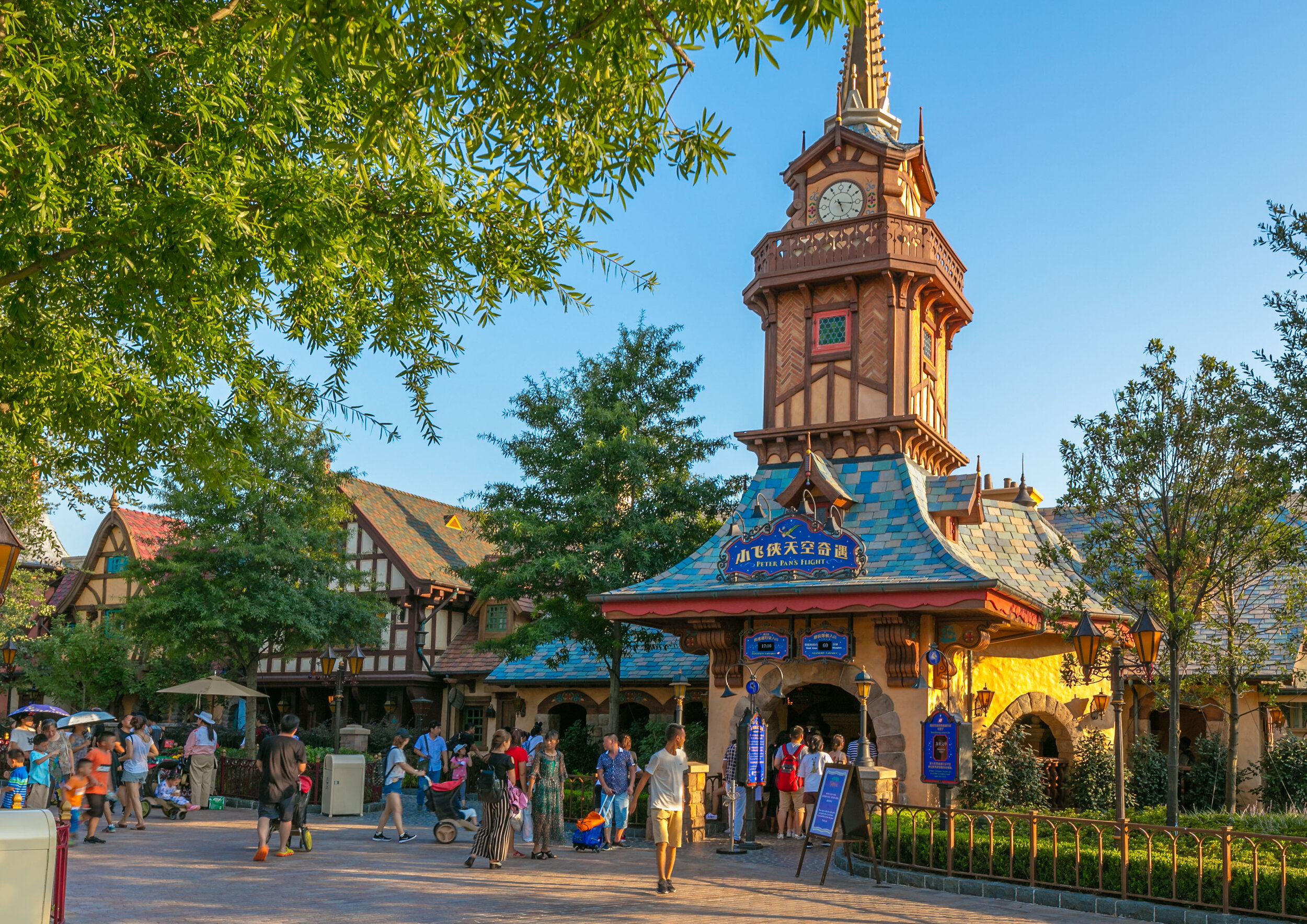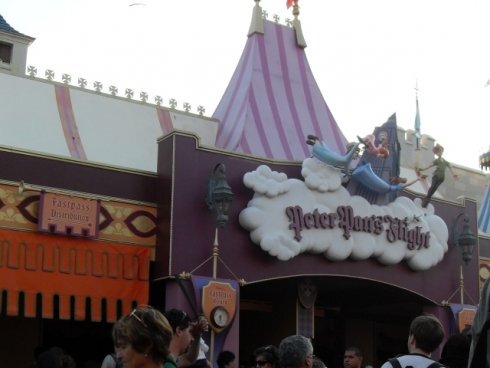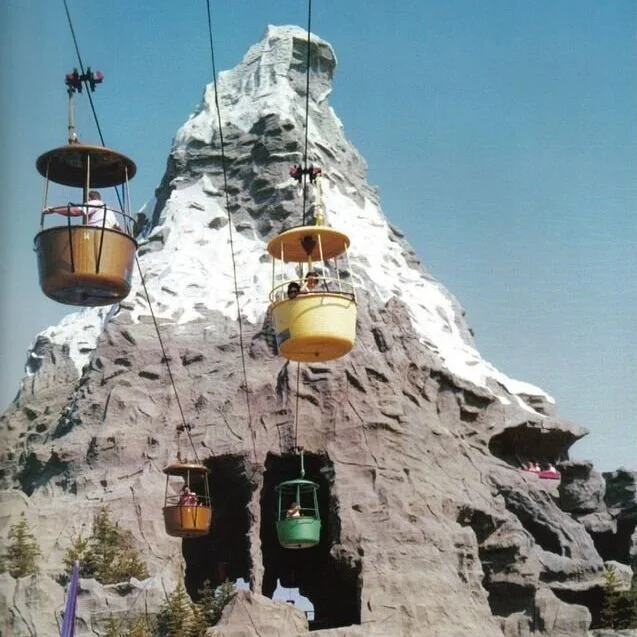The Many Phases of Peter Pan's Flight
Peter Pan’s Flight has remained one of the most popular and beloved Fantasyland dark rides in 5 different Disney parks around the world. It has always been somewhat of a mystery why the line is always so long for it in Disneyland California - but it is no mystery that it stands out from the other dark rides in a special way. You can fly! That’s right, instead of rolling along in a ride vehicle on the ground, you are hoisted up into the air on a pirate ship. Though the ship has remained a staple part of the ride, the exterior and interior has seen a few changes over the years.
Peter Pan’s Flight in Disneyland California.
The Idea of a Peter Pan Attraction (1953)
When Walt brought his original plans for Disneyland to an investor in September 1953, a Peter Pan attraction was featured on the map in Fantasyland. The film was released 8 months prior in February 1953 and was a huge hit with audiences around the world. Walt knew he wanted to implement it into his new theme park idea, since he was starting to make Tinkerbell a staple face of the company too.
In November 1954, Walt wrote a letter to his sister Ruth about the progress he had made on Disneyland thus far. He describes Fantasyland to her:
“Here you will find the Sleeping Beauty Castle, a number of fantastic rides — everything here will be based on the idea of Fantasy. We will recreate portions of Snow White, Peter Pan, Alice in Wonderland, which will be known as Walk Throughs and Fly Through, in the case of Peter Pan.”
Herb Ryman’s map of Disneyland.
Though by this time the Peter Pan dark ride was established as a flying ride, the ride vehicle was still undecided. The theme that Imagineers attempted to convey in Peter Pan’s Flight, Snow White’s Adventures and Mr. Toad’s Wild Ride was that you as the guest were the main character, and you were seeing the environment through their eyes. This didn’t go over well with many guests, as they were confused as to why they wouldn’t see the main character throughout the ride. This was a major complaint for Snow White riders.
According to the Disney Wiki, it was in talks that the ride vehicle may have been Peter himself, and the guest would be placed on his back. In the end, they decided on ships, which made the change of perspectives with the later refurbishment a lot easier.
Ride vehicle concept art by Bruce Bushman. Image from: https://time.com/5347852/disneyland-original-drawings-plans/
Peter Pan Fly Thru - The Original Design (1954)
Herb Ryman, whom designed and created the first ever map for Disneyland when Walt was trying to conceptualize it, is also responsible for thinking up the first iteration of the Peter Pan dark ride in May 1954. Something that was in the original plans but wasn’t included later was a more immersive queue with London buildings and streets. A few months later, Marvin Davis continued the work on the plan and added elements such as Skull Rock, Hangman’s Tree, and Crocodile Creek. Imagineers began the work on the ride vehicle and the test track by the end of the year. Ken Andersen began designing the inside of the dark ride.
Peter Pan’s Flight Exterior (1955 - 1981)
Walt’s original idea for Fantasyland was to have it be themed after a Renaissance fair. The land was complete with large colourful tents, and lots of blues, reds and yellows. The 3 Fantasyland dark rides and the Fantasyland Theater stood together just after passing through Sleeping Beauty’s Castle, as they still do today. These attractions were one of the last things put together for the park before it’s opening. After the track, the vehicles and the layout had been tested. Peter Pan’s Flight only started to be put together in March of 1955.
The model of the original layout of Fantasyland at the Walt Disney Family Museum.
The outside of the ride was decorated in blues, reds and greens, with a small portrait of Peter’s head above the ride’s title “Peter Pan”. The main eye-catching element was the mural along the wall where the pirate ships were, painted by Claude Coats and Ken Andersen. It featured the main characters in front of the Lost Boys’ tree, the clouds above the London town, and Skull Rock.
The exterior of Peter Pan’s Flight in 1955. Image from: https://caryandemily.wordpress.com/tag/disneyland-vs-disney-world/
Part of the mural for Peter Pan’s Flight. Image by: Tom Simpson. Image from: https://www.flickr.com/photos/randar/32774481393
Peter Pan’s Flight Interior (1955 - 1960)
The technology of the flying ride vehicle system was borrowed from Cleveland Tram Rail Company, and it was a conveyer belt system used in factories to transport materials. The ships were attached to a carriage on the ceiling, which rode along a single track. To keep the boats in place while riders boarded, they had a keel at the bottom that would go into a slot on the floor.
Walt Disney in Peter Pan’s Flight. Image from: https://www.pinterest.com.mx/pin/474848354438747986/
The ride began as it does still today, in the Darling family bedroom. As you pass portraits of Wendy, John, Michael, and Nana, you’re met with a projection of Peter’s shadow, waving you to join him to fly into Neverland. “You Can Fly!” plays in the background. The atmosphere immediately becomes darker, mimicking the sensation of flying over London at nighttime. Here you can see Big Ben, the Tower Bridge, many buildings and houses with the lights on, and traffic through the streets. After passing over Big Ben, you could see Tinkerbell continuing to lead the way.
The ground in Peter Pan’s Flight. Image from: https://www.pinterest.ca/pin/327918416610484843/
The ship then dropped a foot to show that the flight was beginning to descend down into Neverland. Now you could see Neverland lit up in greens, yellows and reds. The only elements of Neverland that weren’t featured were Mermaid’s Lagoon and the rainbow. Passed Neverland, you could begin to hear the Pirates song as you saw Captain Hook’s pirate ship in the distance. Next, the vehicle would pass through Skull Rock, where you would witness a scene between Captain Hook, Smee, Tiger Lily, and the Tick Tock Croc. The crocodile waiting for Captain Hook was the last scene on the ride before re-entering the loading area.
Peter Pan’s Flight map. Image from: https://insightsandsounds.blogspot.com/2015/06/peter-pans-flight-history-concept-art.html
Peter Pan’s Flight Upgrade (1960 - 1982)
In 1960, after 5 years of guests entering the park and being very opinionated about what they did and didn’t like, the Fantasyland dark rides all got upgrades of their own. For Peter Pan, a lot of the track technologies had their faults and caused Imagineers to have to regularly upgrade them. A major overhaul took place to replace certain track elements, the sound systems, and the lighting.
More subtle effects were added to the London and Neverland scenes, and Skull Rock was moved over so you flew passed it instead of through it. Some of the figures inside the ride were given updates too, such as Captain Hook and the crocodile.
New Fantasyland Refurbishments (1983 - 2015)
In 1983, Fantasyland reopened with an all-new look as the Medieval fair theme was no longer popular with guests. It now had a European-storybook theme with the new architecture. When Walt was thinking of ideas for Fantasyland, he did have a design created for a storybook themed village version of the Peter Pan attraction, and Imagineers followed it very closely to create the one we see today. Only the exterior was fully demolished to be rebuilt, but the interior tracks stayed very similar to the original with some updates.
Peter Pan’s Flight refurbishment in 1982. Image from: http://disneylandcompendium.blogspot.com/2009/07/peter-pan-flight-demolition.html
One major update was the way the ride begins, instead of taking a sharp left into an empty nursery with some portraits, now you could go straight into the nursery to see the children. A new scene was added to the very end to finally feature Mermaid’s Lagoon. A lot of other scenes were added too, after seeing the success of the ones in Walt Disney World.
The Peter Pan Attraction in Walt Disney World (1971)
Peter Pan’s Flight opened when Walt Disney World opened in 1971. Now with almost 20 years of experience with this ride under Imagineer’s belts from Disneyland, they now wanted to see what other upgrades they could make to make this Magic Kingdom version even better. Before the New Fantasyland refurbishment, Magic Kingdom added new animatronics of Wendy, John, and Michael in the opening nursery scene. They also added Mermaid’s Lagoon and the rainbow onto the Neverland scene, which Disneyland still did not have until 1983.
The ride time was longer than the Disneyland version as they attempted to replicate more scenes from the movie into it. They added a Peter and Hook fight scene, a Wendy on the plank scene, and another Hook and Tick Tock Croc scene.
The Peter Pan dark ride attraction is featured in all Disney parks except for Hong Kong Disneyland.
Peter Pan’s Flight Today (2015 - 2021)
In 2015, Peter Pan’s Flight got another major refurbishment, the first one since the opening of New Fantasyland. Though the exterior, track layout, and the scenes remained mostly the same, they wanted to add some of the new technologies to make it feel more current.
Instead of having the Darling children sit on the bed in the opening scene, they were now flying against the wall with sparkling pixie dust surrounding them. A more realistic green light flying around some of the buildings was added to represent Tinkerbell. The lighting was upgraded in the London scene to make all of the city lights pop. The waterfall and rainbow during the Neverland scene also had it’s lighting upgraded to make them stand out. And finally another pixie dust scene was added to the scene where Peter is steering the boat.
Peter Pan’s flight 2015 addition. Image from: https://disneyparks.disney.go.com/blog/2015/06/first-look-new-magic-added-to-peter-pans-flight-at-disneyland-park/
If you enjoyed this post, check out my previous post about the original voice for Peter Pan in 1953, Bobby Driscoll.
Reference list:
https://disney.fandom.com/wiki/Peter_Pan%27s_Flight
https://www.youtube.com/watch?v=Ea-wXmBKVTU
https://www.youtube.com/watch?v=Ea-wXmBKVTU&t=249s
https://www.youtube.com/watch?v=uJdr4rOhTGI
https://www.youtube.com/watch?v=mQV7LCQfwGM
https://www.waltdisney.org/blog/1955-2015-disneylands-peter-pans-flight-e-ticket
